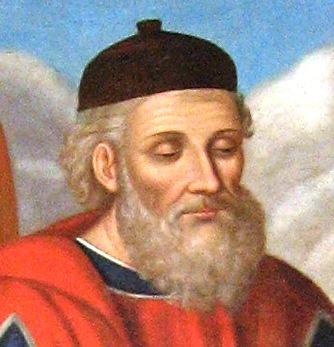Amazons
Costa, Nicholas
Nicholas Costa is the author of a number of books on the history of coin-operated devices, so it came as a surprise that he ventured into the world of Greek mythology in his 2023 book, Atlantis, the Amazons and the Birth of Athene [2072]. I have never been very interested in Greek mythology, inhabited as it is by a melange of so many belligerent oversexed characters. However, Costa has taken a euhemeristic approach and will probably raise a few eyebrows, if not hackles with his conclusions.
Costa is convinced that “the bulk of the myths relate to a historically short period of time, basically the period 1550-1184 BC!” This statement certainly drew me in. The author also offers a revised view of the Amazons, who he claims were not an exclusively female tribe. He also refers positively to Peter James’ book, The Sunken Kingdom [047], who expressed similar views regarding the location of Atlantis, also placing it in what is now western Turkey.
I have decided to keep spoilers to a minimum. However, since this site is concerned with Atlantis, I feel obliged to reveal that Costa has identified Ayasuluk Hill, situated just a mile from the site of ancient Ephesus, as the location of the citadel of Atlantis. This book is worth a read for the author’s step-by-step exposition of the importance of ancient Lydia in the history of Atlantis and the region generally. However, as the title of the book indicates it is about much more than just Atlantis.
Although this book clashes with some of my opinions, I still think it is a valuable addition to any Atlantis library. My biggest gripe, already expressed directly to Costa, is the lack of an index, that can be so valuable to researchers. I know that I shall read this book a second time and highly recommend it.
>Thorwald C. Franke published a short review of Costa’s book(a) in his Newsletter #216.<
(a) https://www.atlantis-scout.de/atlantis_newsl_archive.htm *
Baker, Alan
 Alan Baker (1964- ) is an English author with a mixed output of both non-fiction as well as some fiction. His chief interest would appear to be historical mysteries, which led to the publication of The Enigmas of History[1306]. This book touches on a number of subjects covered on this site; Noah’s Deluge,* Stonhenge, Amazons and, of course, Atlantis. He briefly discusses a few of the more popular theories; Bimini, Thera, and the Atlantic, but arrives at no firm conclusion, although he appears sympathetic to its existence. In his Destination Earth[1030] he delves into the disappearance of Percy Fawcett and the mysteries relating to South America.
Alan Baker (1964- ) is an English author with a mixed output of both non-fiction as well as some fiction. His chief interest would appear to be historical mysteries, which led to the publication of The Enigmas of History[1306]. This book touches on a number of subjects covered on this site; Noah’s Deluge,* Stonhenge, Amazons and, of course, Atlantis. He briefly discusses a few of the more popular theories; Bimini, Thera, and the Atlantic, but arrives at no firm conclusion, although he appears sympathetic to its existence. In his Destination Earth[1030] he delves into the disappearance of Percy Fawcett and the mysteries relating to South America.
Caucasus Mountains
The Caucasus Mountains lie between the Black and Caspian Seas and contain the highest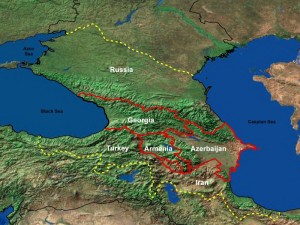 mountain in Europe, Mount Elbrus (Russia). In ancient times it was the location of several kingdoms of whom two were known as Albania and Iberia.(d)>Today, they contain a small part of the Russia Federation along with the former Soviet republics of Armenia, Azerbaijan and Georgia.<
mountain in Europe, Mount Elbrus (Russia). In ancient times it was the location of several kingdoms of whom two were known as Albania and Iberia.(d)>Today, they contain a small part of the Russia Federation along with the former Soviet republics of Armenia, Azerbaijan and Georgia.<
>Delisle de Sales was probably the first to suggest the Caucasus as the home of the original Atlantis, with refugees from there establishing Plato’s Atlantis in the Central Mediterranean. However, the greatest proponent of the Caucasus location for Atlantis was R.A. Fessenden who wrote, The Deluged Civilisation of the Caucasus Isthmus, an extensive multi-volume work [1012] on the subject published early in the 20th century.<
>Regarding the Pillars of Herakles being in the Caucasus Fessenden noted “The fact that Nebuchadnezzar, after reaching them in his northern expedition, next went to the north shore of the Black Sea and to Thrace; and that Hercules, coming back from the pillars with the cattle of Geryon, traversed the north shore of the Black Sea (see Megasthenes, quoted by Strabo and Herodotus, 4.8), puzzled the ancient geographers because they thought that the Pillars were at the straits of Gibraltar. And because they had overlooked the fact that the Phoenicians of Sidon had known that the Pillars had been lost and that the Phoenicians had sent out four expeditions to look for them but had reached no conclusion from these expeditions except that the straits of Gibraltar were not the true Pillars of Hercules.” See Strabo, 2.5 (m)<
More recently, Ronnie Gallagher, an admirer of Fessenden, has studied the Caucasus region, in particular, 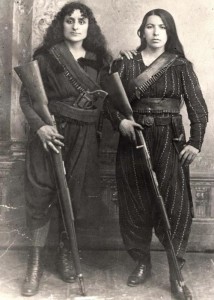 the hydrology of the Caspian Sea(a), where he identified strandlines up to 225 metres above sea level (ASL), which he considers to be evidence of a vast inland Eurasian sea at the end of the last Ice Age. In Azerbaijan, he also found cart ruts similar to those on Malta as well as stone circles on the Absheron Peninsula(b). Professor E. N. Badyukova has offered some critical comments regarding Gallagher’s claims(k).
the hydrology of the Caspian Sea(a), where he identified strandlines up to 225 metres above sea level (ASL), which he considers to be evidence of a vast inland Eurasian sea at the end of the last Ice Age. In Azerbaijan, he also found cart ruts similar to those on Malta as well as stone circles on the Absheron Peninsula(b). Professor E. N. Badyukova has offered some critical comments regarding Gallagher’s claims(k).
Flinders Petrie also referenced Fessenden in his (1926) paper The Origins of the Book of the Dead(f), in which he concluded “that the cultural connections of the earliest Egyptians, as well as the physical descriptions in their mythology, point to the Caucasus region. When, further, we find there the names of the principal places of the mythology in their relative positions, it gives strong grounds for regarding that region as the homeland of the earliest civilisation of the Egyptians.”
A few years later, an article by Margaret A. Murray in Antiquity (Volume 15 – Issue 60 – Dec. 1941) noted that Petrie’s “opinion was based entirely on literary and philological evidence” resulting in archaeologists being slow to accept it. To partially counter this Murray offered two pieces of evidence in support of Petrie’s proposed Egyptian-Caucasus connection.(i)
However, I must point out that in 1874 Hyde Clarke delivered a paper to the Royal Anthropological Institute in which he claimed that the Colchians in the Caucasus had been an Egyptian colony(h). Clarke also employed language similarities>and Herodotus’ Histories (Bk2.102-106)< to support his contention. So we can reasonably ask, who was right or were both Clarke and Flinders Petrie wrong?
A forum on Graham Hancock’s website offered some more discussion about an Egyptian link with the Caucasus(j).
Jean-Michel Hermans has claimed that the megalith builders of Brittany originally came from the Caucasus, and arrived there after a stop in what is now Bulgaria around 5000 BC(l),>and while there, they discovered mathematical relationships such as ‘pi’ and the ‘golden ratio’ !<
The Amazons of Greek mythology are thought by some to have originated in the Caucasus and as late as 1671, Sir John Chardin reported that a tribe of Amazons existed in Georgia. Interestingly, a 19th-century photo shows two armed ladies from Armenia captioned as ‘Amazons of Armenia 1895’.
An added mystery was offered by Alexander Braghine, who recounted that “I was present when a former Russian officer of Georgian origin found himself able to talk with the natives of Vizcaya immediately upon his arrival in Northern Spain: he spoke Georgian, but the Basques understood this language.” [156.187]
Currently, Bruce Fenton has claimed the Caucasus as the home of giants. However, Jason Colavito has demonstrated the unreliability of his claims(c).
In the Krasnodar region of southern Russia hundreds (actually 3,000 and counting) of dolmens are to be found on both sides of the Caucasus. Interestingly, they show a distinctive form of megalithic architecture(g).
I feel that the Caucasus will have a lot more to tell us.
(a) Wayback Machine (archive.org)
(b) https://www.azer.com/aiweb/categories/magazine/ai103_folder/103_articles/103_cart_ruts.html
(d) https://en.wikipedia.org/wiki/Caucasian_Albania
(f) Archive 6947 | (atlantipedia.ie)
(g) The mysterious dolmens and megaliths of the Caucasus – The Tapestry of Time (larazzodeltempo.it)
(h) https://www.jstor.org/stable/pdf/2841305.pdf
(i) Antiquity, Vol. 15, Issue 60, Dec. 1941 p.384-386
(j) New article: Observations on Late Pleistocene Flooding of the… – Graham Hancock Official Website
(k) Archive 7221 | (atlantipedia.ie)
(l) Amazon.fr
Diodorus Siculus
Diodorus Siculus (c. 90-21 BC) was born in Agyrium, Sicily. He travelled extensively through Europe and Asia gathering information that was to be incorporated in his Bibliotheca Historica, a work of forty books divided into three parts. Unfortunately, only the first five books are extant(a). He quotes extensively from an earlier historian Skytobrachion. Nevertheless in this remnant of his work we find Diodorus making a number of references to Atlantis.
He calls the land bordered by the Atlantic and surrounded by the Atlas Mountains, ‘Atlantis’, which would be modern Morocco. Diodorus tells how a great king there, renowned as an astrologer, called Atlas, named the whole region and the sea after himself. Diodorus writes that following the death of the Titan, Hyperion, the world was divided among the sons of Uranus. Accordingly, Cronus and Atlas were given the regions on the coast of Oceanus (Atlantic). A mountain was called after Atlas and the local inhabitants named Atlantioi.
What is strange here is that according to Greek myth, Atlas is noted as the son of Iapetus, yet Plato has Atlas as the son of Poseidon. This divergence between Diodorus and Plato would seem to indicate that Diodorus was NOT depending on Plato for details of his Atlantis story. Plato did not refer to an astrologer and gives a different lineage for Atlas.
Diodorus claims that the people of Atlantis had no knowledge of the fruits of Ceres the Roman goddess of plant growth. This appears to suggest that the Atlanteans did not have cereals and consequently no bread or brewing! It may be worth noting that American Indians also lacked any knowledge of cereals.
He also writes about the Amazons, a warlike tribe ruled by women, from North Africa, where they lived on an island in ancient Lake Tritonis. He relates how this lake disappeared when earthquakes created a breach to the Mediterranean. This latter point may have particular relevance to atlantologists who identify the Tunisian coastal region as the location of Atlantis.
Diodorus gives details of a war fought by the Amazons against the Atlantioi, which they won. He also relates how the Phoenicians discovered in the Atlantic, an island of great wealth and beauty (Book V) and that this island was found by accident when they were carried by the Atlantic currents to its shores. This could not have been Atlantis as the island was discovered long after it was supposed to have been submerged, leaving just shoals of mud.
Cerne *
Cerne was an island mentioned in the Pseudo-Scylax as being twelve days sail from the Pillars of Heracles. It adds that parts beyond the isle of Cerne (Kerne) are no longer navigable because of shoals, mud and seaweed. Although some have seen this as a reference to the Sargasso Sea, mud and shoals are not characteristics of the Sargasso, which is a mile or more deep.
are no longer navigable because of shoals, mud and seaweed. Although some have seen this as a reference to the Sargasso Sea, mud and shoals are not characteristics of the Sargasso, which is a mile or more deep.
Diodorus Siculus (iii.54) wrote of the Amazons fighting the Atlantoi in the city of Cerne. Some commentators have identified Cerne with the islands of Kerkenna off the east coast of Tunisia, where on the other hand Egerton Sykes linked the Cerne referred to in Pseudo-Scylax with Lixus on the Atlantic coast of Morocco.
Frank Joseph erroneously claims[108.117] that the only known ‘Cerne’ was Cerne Abbas in England, the site of the famous naked giant carved into the chalk. There is certainly no suggestion of any Amazon invasion there and the physique of the giant was certainly never matched by even the most butch Amazons. Not for the first time, Joseph is blatantly wrong. As in the case of so many other places mentioned in connection with Atlantis story there were a number of ancient towns named Cerne. The most famous such reference is in the record of Hanno’s voyage(b), generally accepted to be along the Atlantic coast of Morocco, where south of Lixus, he settled and named an island Cerne(a).
(a) https://www.ancient.eu/article/913/hanno-carthaginian-explorer/
(b) http://www.metrum.org/mapping/hanno.htm (link broken) See map
Bory de Saint Vincent, Baron Jean Baptise Geneviëve Marcellin (L)
Baron Jean Baptise Geneviëve Marcellin Bory de Saint Vincent (1778-1846) was a Frenchman with a lifelong fascination  with botany and proud owner of a very wide business card. He joined the army where he developed an interest in cartography. His career brought him to the Canaries and other islands of the eastern Atlantic, where his interest in the Guanches prompted him, over two hundred years ago, to write an illustrated work[192] in which he primarily built on the Atlantean references of Diodorus. He clearly identifies the Guanches of the Canary Islands with the Atlanteans and describes the invasion of North Africa by the Atlanteans and Amazons after the submergence of their homeland. Apart from the evidence of Diodorus he has based his conclusions on geological observations, which were that Atlantis had been a large island continent that existed in the Atlantic. He claimed that volcanic activity destroyed most of this island forcing the Atlanteans to invade Europe and eventually to war with the Athenians. Bory believed that the Canaries, Madeiras and Azores are all that are left of this once great continent!
with botany and proud owner of a very wide business card. He joined the army where he developed an interest in cartography. His career brought him to the Canaries and other islands of the eastern Atlantic, where his interest in the Guanches prompted him, over two hundred years ago, to write an illustrated work[192] in which he primarily built on the Atlantean references of Diodorus. He clearly identifies the Guanches of the Canary Islands with the Atlanteans and describes the invasion of North Africa by the Atlanteans and Amazons after the submergence of their homeland. Apart from the evidence of Diodorus he has based his conclusions on geological observations, which were that Atlantis had been a large island continent that existed in the Atlantic. He claimed that volcanic activity destroyed most of this island forcing the Atlanteans to invade Europe and eventually to war with the Athenians. Bory believed that the Canaries, Madeiras and Azores are all that are left of this once great continent! 
However, in a letter dated 15/11/1822, that recently went on sale, he confessed that his earlier theories were wrong(a).
Azor’s Tale
Azor’s Tale is a story occasionally produced to support the narrative of Atlantis. It claims to be a translation(a) of a document by Diodorus of Alexandria that purports to tell the story of Azor, an Atlantean and his mistreatment at the hands of the Amazons. It incorporates many details of Atlantis recorded by Plato but contains nothing new. The essay includes a pornographic description of the Amazon Queen Myrine’s abuse of Azor’s tail.
The document is considered an obvious forgery and has been attributed to the alchemist Fulcanelli.
Amazons
Amazons is the name used by classical writers(k) to identify two matriarchal nations living near the Black Sea and in ancient Libya, but at apparently 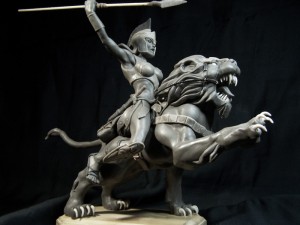 different periods. An extensive website on the subject associates the Amazons with three locations; Lake Tritonis(j) , the Greek island of Lemnos(i) and the River Thermodon, now known as Terme Çay, in northern Turkey(h).
different periods. An extensive website on the subject associates the Amazons with three locations; Lake Tritonis(j) , the Greek island of Lemnos(i) and the River Thermodon, now known as Terme Çay, in northern Turkey(h).
Accounts relating to these remote times are understandably vague but one tale describes the Libyan Amazons as waging war against the Atlanteans, a race who lived in a prosperous country with great cities.
Attention has been drawn to the fact that the Berbers, also known as Amazigh in North-West Africa have a matriarchal culture. The possibility of an etymological connection between Amazon and Amazigh was suggested by Guy C. Rothery (1863-1940) in his 1910 book, The Amazons[1393] , and recently endorsed by Emmet Sweeney in his Atlantis: The Evidence of Science[700]. In 1912, Florence Mary Bennett published Religious Cults Associated with the Amazons[1548], which has been republished in recent years.
Another matriarchal society in the same region has also been suggested for the Maltese Islands(h).
Sir John Chardin (1643-1713) a French-born traveller and merchant reported that a tribe of Amazons still existed in the Caucasus in the 17th century(d).
Although the idea may be seen as fanciful, recent archaeological discoveries have provided evidence of female warriors in ancient times in parts of the former Soviet Union. The archaeologist Jeannine Davis-Kimball has written of her investigations[045] into the subject. Peter James offers[046] a solution to the existence of two locations for the Amazons. He believes that the original Black Sea location is correct and that the transference of the story to North Africa was the result of the ‘libyanising’ intent of Dionysus of Miletus, who was later quoted by Diodorus Siculus in his account(f) of the Amazons.
. James offers this explanation as part of a larger relocation of mythologies to more westerly locations. Other interesting views of the Amazon mystery can be found on a number of websites(a)(b).
Lewis Spence advanced the imaginative view [259.49] that the Amazons were not women at all, but men whose appearance was considered effeminate by some commentators. A more rational explanation on offer is that the males of some peoples had little facial hair or shaved (such as the Hittites) and were possibly described by their more hirsute enemies as ‘women’.
The popular idea that the Amazons were single-breasted, man-hating warriors has recently been comprehensively debunked by Adrienne Mayor in her latest book, The Amazons[1043] .
>Even more eyebrow-raising is the suggestion that Amazon warriors existed in South America based on 16th century reports and modern research(c). Columbus, in a 1493 letter to Luis de Sant’angel, refers to an island named Matininó, which was inhabited only by women(m), armed with bows and arrows. Hernán Cortés also filed a similar report.<
The Smithsonian magazine published a useful overview(e) of the history of the Amazon story in the April 2004 edition and in September 2011 revealed the story of the little-known female warriors of Benin (formerly Dahomey), numbered in their thousands, who were active during the 17th, 18th and 19th centuries. The BBC published an article in August 2018 on their history and their modern day descendants(l) .
(a) https://www.maicar.com/GML/AMAZONS.html
(b) https://web.archive.org/web/20190509212918/https://www.amazonation.com/Archaeology.html
(c) https://brazilweirdnews.blogspot.ie/2011/05/amazons-phoenicians-and-atlantis.html
(d) https://www.abebooks.com/Travels-Sir-John-Chardin-Persia-East/5455430940/bd
(e) https://www.smithsonianmag.com/history/amazon-women-there-any-truth-behind-myth-180950188/?no-ist
(f) https://archive.org/details/lp0048_amazons_vs_at
(g) https://www.smithsonianmag.com/history/dahomeys-women-warriors-88286072/?no-ist
(h) https://www.myrine.at/Amazons/mobilIndex.html
(i) https://www.myrine.at/Lemnos/mobilLemnos.html
(j) https://www.myrine.at/Berber/mobilBerber.html
(k) https://www.myrine.at/Amazons/texts_e.html
(l) https://www.bbc.com/travel/story/20180826-the-legend-of-benins-fearless-female-warriors
>(m) https://tanlistwa.com/2018/02/22/martinica-women-island-iguanas-island-or-flowers-island/<
Parthenon
The Parthenon atop the Acropolis of Athens is one of the best-known monuments in the world. In its glory days, it must have been even more impressive as it is now known that the edifice was painted in ‘dazzling’ colours(e). When it was first realised that the Greeks and Romans had made such an extensive use of colour on their statuary and buildings it must have come as a shock to many. However, the painting of statues may have a very ancient history as a recent discovery at Karahan Tepe, a life-size statue of a wild boar, dated to between 8700 BC and 8200 BC, has demonstrated, where “Archaeologists detected red, black and white pigments on its surface, indicating that the sculpture was once painted.” (i)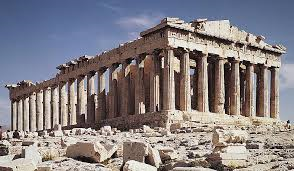
It has been long claimed that the Parthenon incorporated the Golden Ratio (1:1.618) in its design(b). This is now strongly refuted by Chris Budd OBE, Professor of Applied Mathematics at the University of Bath(c) and Samuel Arbesman a senior scholar at the Ewing Marion Kauffman Foundation(d).
The Parthenon was claimed by David Pinnegar(a) to have been constructed to commemorate the victory of the Athenians over the Atlanteans. He further contends that the frieze that adorned the Parthenon holds a representation of the debate to which Plato referred at the end of the Critias text. If this interpretation is true, is it not likely that Plato or any other classical writer would have referred to it? The frieze also appears to depict the Athenian war with the Amazons.
>In 2004, Robert Bowie Johnson jr, published The Parthenon Code [2078], in which the author claims “that both the Book of Genesis and the artwork found on the Parthenon are telling the same story — but from a reversed perspective. He writes that Genesis tells the story of the submissive, “the line of Seth.” The Parthenon, meanwhile, tells the story of those who resist the God of the Bible, the “line of Cain,” (spelled “Kain” in some non-biblical material).
The author compares the art found on ancient Greek vases with the statuary found on the Parthenon, and discerns a detailed story of the Greek gods and their resistance to and struggle against the God of the Bible. A common, unambiguous story, opposite from that told in Scripture, is detected when that evaluation is made. It is a story in which the God of Noah — the God of Seth — is actually defeated by the Greek gods!”<
In 2008, Evan Hadingham wrote an article for Smithsonian Magazine reporting on behind-the-scenes discoveries at the Parthenon encountered during the current extensive restoration work there(g). A 2021 article in the same magazine has drawn attention to controversies that have arisen over details of the renovation work(h).
A full-scale copy of the Parthenon was constructed in 1897 in Nashville, Tennessee to celebrate the state’s centennial(f). Inside is the tallest (over 41ft) indoor sculpture in the Western world, depicting a stunning gold-covered image of Athena.
(a) http://www.hammerwood.mistral.co.uk/elgin.htm
(d) Math as Myth – Nautilus | Science Connected (archive.org)
(e) https://www.bbc.com/culture/article/20180119-when-the-parthenon-had-dazzling-colours
(f) https://www.nashvilleparthenon.com
(g) https://www.smithsonianmag.com/history/unlocking-mysteries-of-the-parthenon-16621015/
(i) 11,000-year-old statue of giant man clutching penis unearthed in Turkey | Live Science

